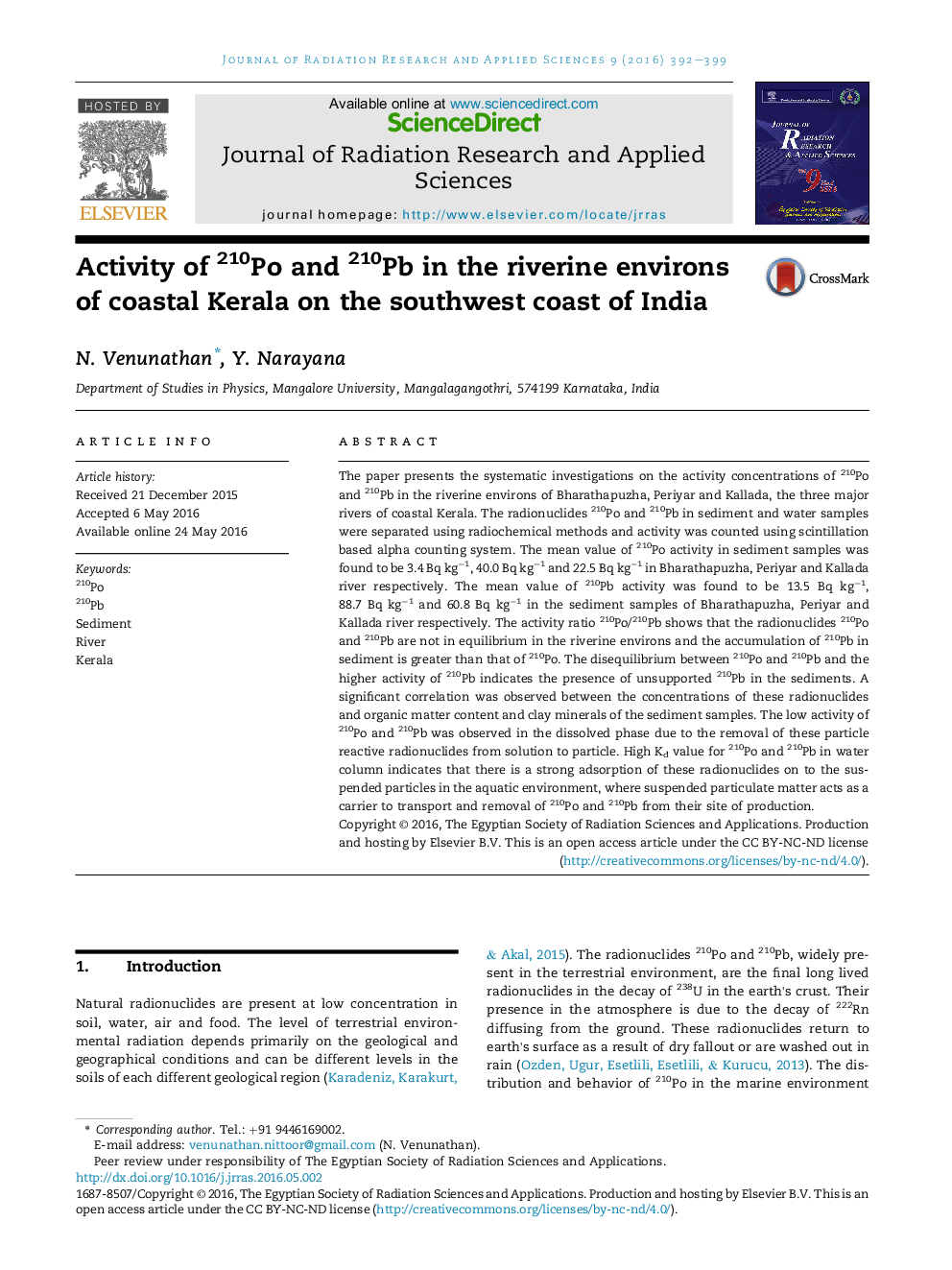| Article ID | Journal | Published Year | Pages | File Type |
|---|---|---|---|---|
| 5454491 | Journal of Radiation Research and Applied Sciences | 2016 | 8 Pages |
Abstract
The paper presents the systematic investigations on the activity concentrations of 210Po and 210Pb in the riverine environs of Bharathapuzha, Periyar and Kallada, the three major rivers of coastal Kerala. The radionuclides 210Po and 210Pb in sediment and water samples were separated using radiochemical methods and activity was counted using scintillation based alpha counting system. The mean value of 210Po activity in sediment samples was found to be 3.4 Bq kgâ1, 40.0 Bq kgâ1 and 22.5 Bq kgâ1 in Bharathapuzha, Periyar and Kallada river respectively. The mean value of 210Pb activity was found to be 13.5 Bq kgâ1, 88.7 Bq kgâ1 and 60.8 Bq kgâ1 in the sediment samples of Bharathapuzha, Periyar and Kallada river respectively. The activity ratio 210Po/210Pb shows that the radionuclides 210Po and 210Pb are not in equilibrium in the riverine environs and the accumulation of 210Pb in sediment is greater than that of 210Po. The disequilibrium between 210Po and 210Pb and the higher activity of 210Pb indicates the presence of unsupported 210Pb in the sediments. A significant correlation was observed between the concentrations of these radionuclides and organic matter content and clay minerals of the sediment samples. The low activity of 210Po and 210Pb was observed in the dissolved phase due to the removal of these particle reactive radionuclides from solution to particle. High Kd value for 210Po and 210Pb in water column indicates that there is a strong adsorption of these radionuclides on to the suspended particles in the aquatic environment, where suspended particulate matter acts as a carrier to transport and removal of 210Po and 210Pb from their site of production.
Related Topics
Physical Sciences and Engineering
Materials Science
Materials Science (General)
Authors
N. Venunathan, Y. Narayana,
